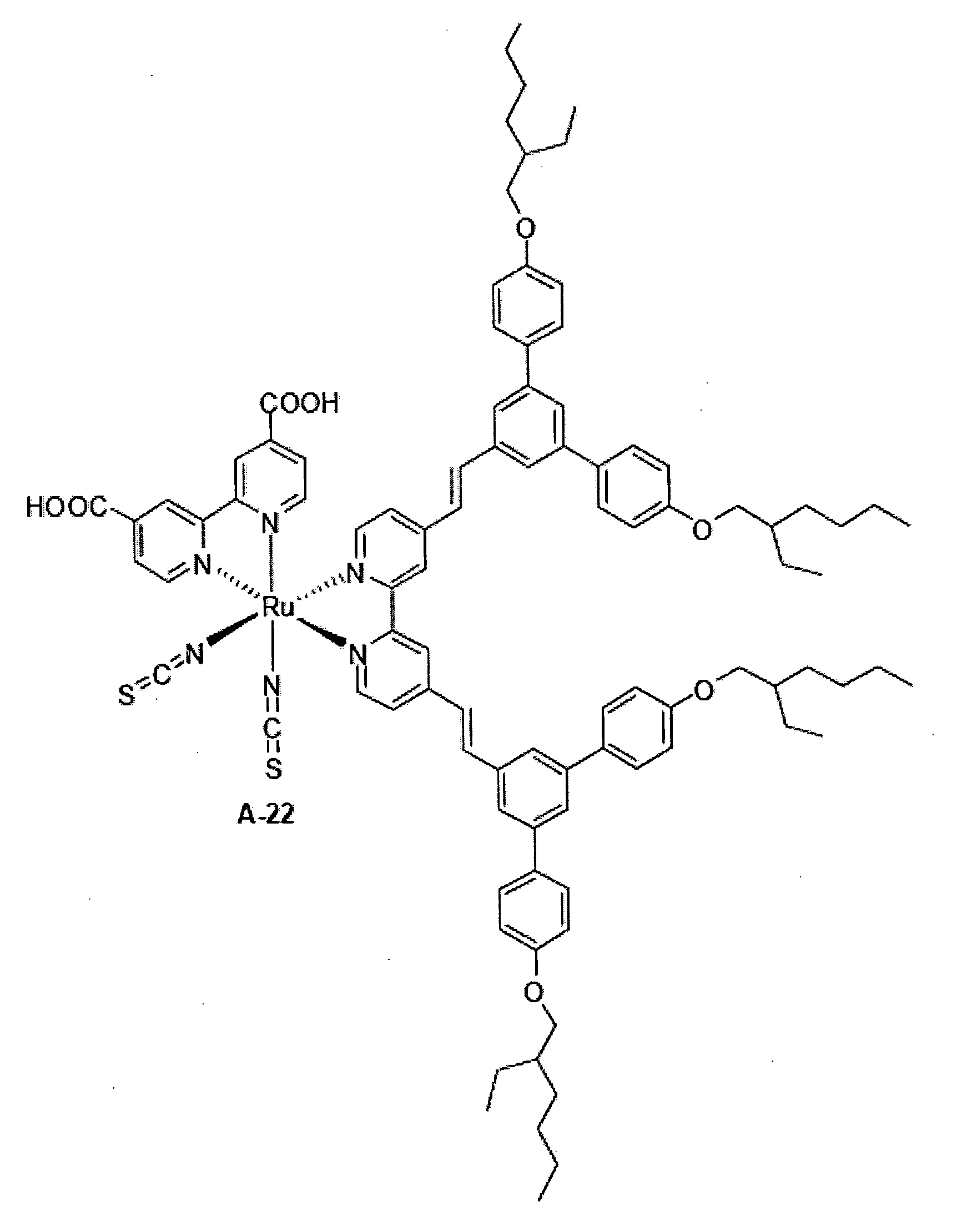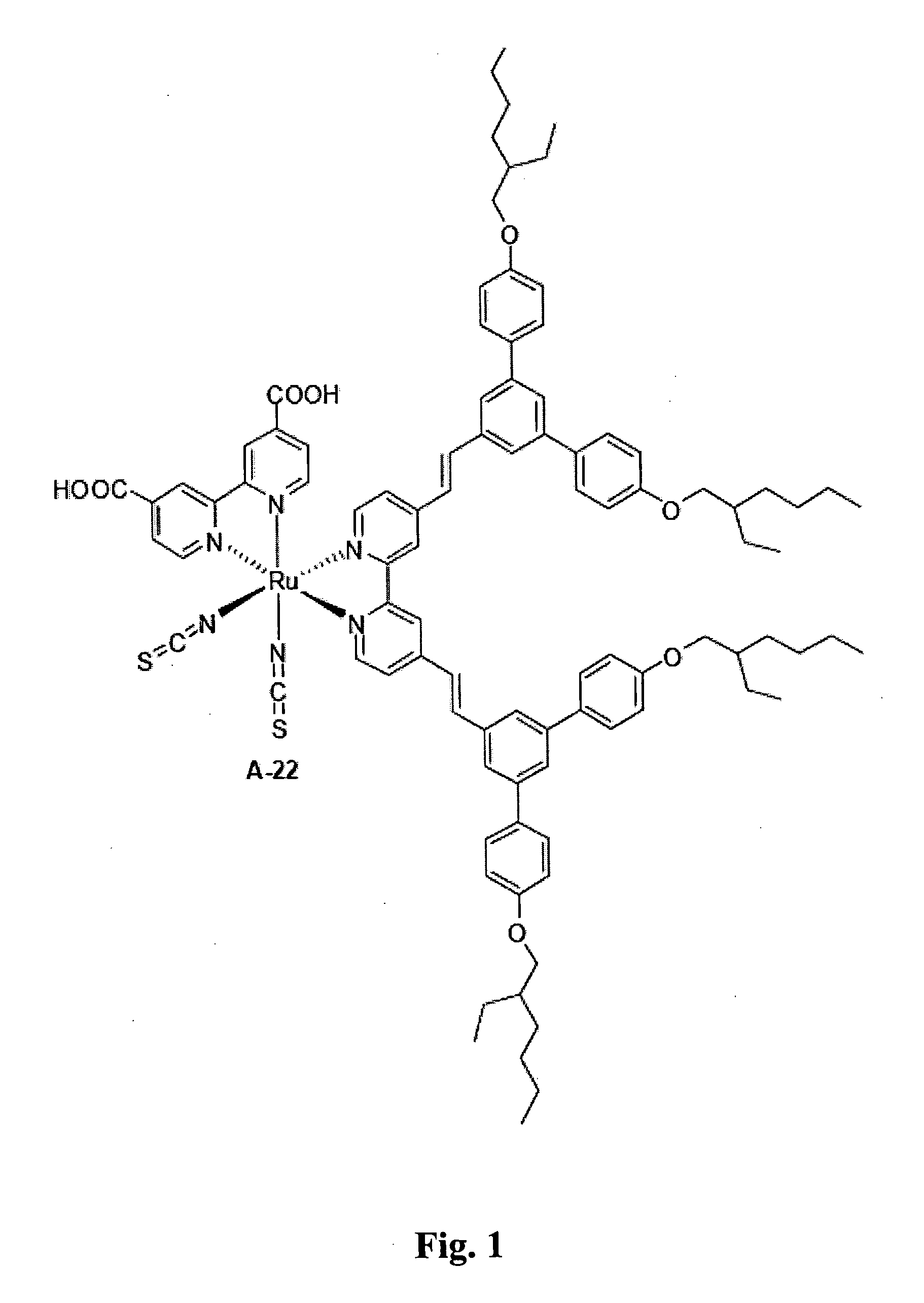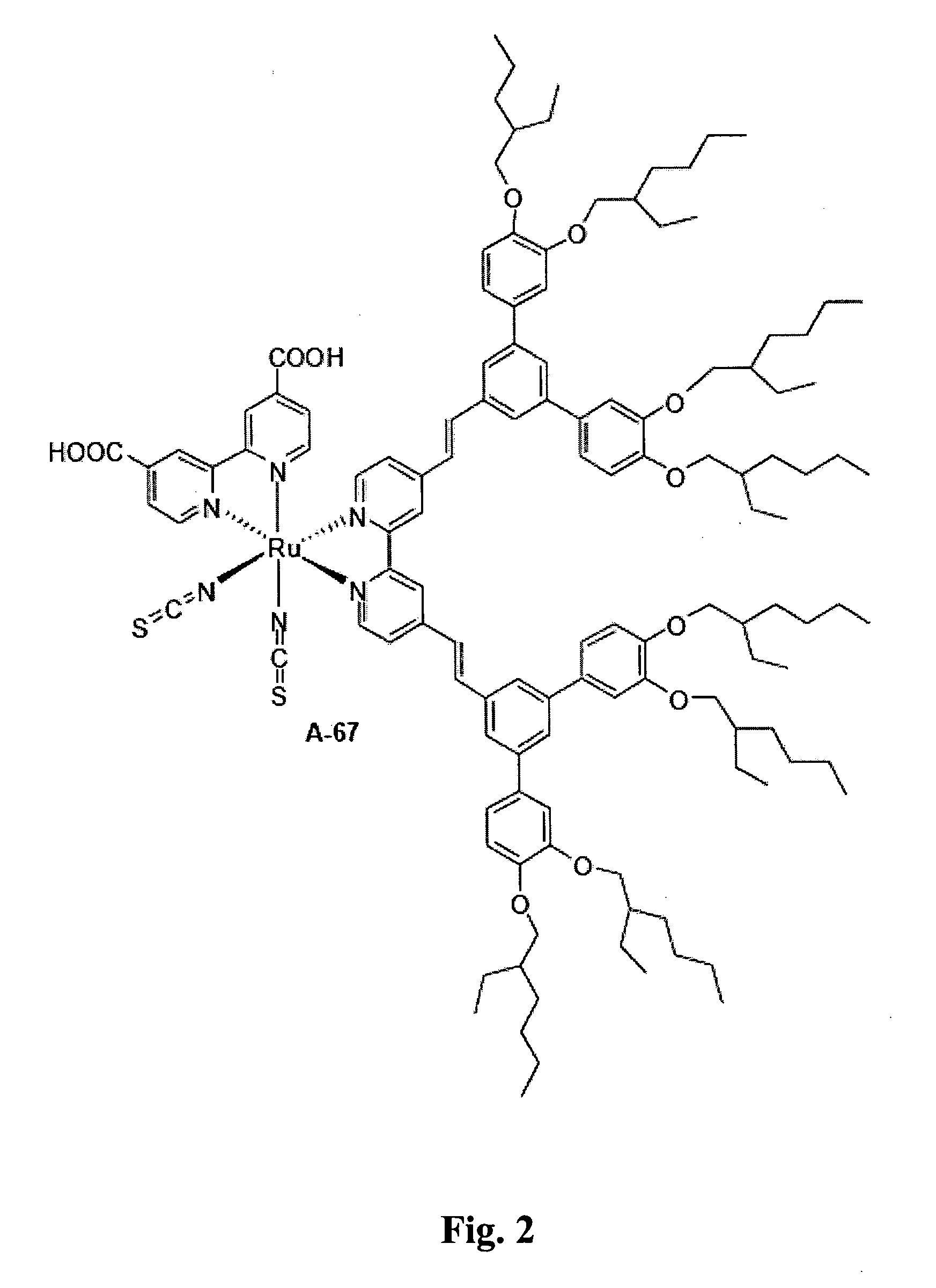Branched materials for photovoltaic devices
a photovoltaic device and branched material technology, applied in the direction of ruthenium organic compounds, methine/polymethine dyes, electrolytic capacitors, etc., can solve the problems of inability to compete with the new high-efficiency compound semi-conductor technology based on gallium arsenide (>30%), the standard high-efficiency polycrystalline or monocrystalline silicon cells (15-22%), and the simple structure of ru(ii) complexes
- Summary
- Abstract
- Description
- Claims
- Application Information
AI Technical Summary
Benefits of technology
Problems solved by technology
Method used
Image
Examples
examples 1 to 3
Synthesis of dendrimers A-22 (Example 1), A-67 (Example 2) and A-68 (Example 3)
[0251]
(i) Synthesis of DiPy-G1-MEH
[0252]
[0253]Potassium tert-butoxide (0.62 g, 5.5 mmol) was added to a solution of the compound 1 (1.00 g, 2.2 mmol) and G1-MEH-CHO (2.53 g, 4.9 mmol) in THF (30 mL). Compound 1 was prepared according to the following reference; (1) A. P. Smith et al, Organic Syntheses, 2004, 10, 107, (2) L. Viau et al, Tetrahedron Lett, 2004, 45, 125. Compound 2 was prepared according to the following reference; S.-C. Lo et al, Adv. Func. Mater. 2005, 15, 1451. The reaction mixture was stirred for 3 hours at room temperature. After addition of water (20 mL), THF was removed under reduced pressure. The aqueous residue was extracted with dichloromethane (200 mL). The collected organic layers were washed with brine (100 mL) and water (200 mL), and dried over magnesium sulfate, and filtered. The crude product was purified by column chromatography (deactivated) on silica gel column (ethyl acet...
example 4
Fundamental Properties of Dendritic Ru Sensitizers A-22, A-67 and A-68
[0277]Fundamental optical and physical properties of the dendritic Ru sensitizers A-22, A-67 and A-68 were characterised by comparison with the simple Ru sensitizers N3 and A-29. This was done in order to check the versatility of dendritic structures and predict their performances in dye-sensitized solar cell (DSSC) devices. The structures of N3 and A-29 are as follows:
[0278]N3 is a known Ru sensitizer. A-29 was prepared for investigating the characteristics of dendritic structures versus a non-dendritic structure; the conjugation length of the bipyridyl ligand in A-29 is the same as that of the bipyridyl ligand in each of the dendritic compounds.
[0279]It was found that the dendritic sensitizers A-22, A-67 and A-68 met requirements for high performance DSSC sensitizers with both high conversion efficiency and good stability.
[0280](i) Light Harvesting Capacity
[0281]The light harvesting efficiency is governed by the...
example 5
Device Performance of Dendritic Ru Sensitizers
[0288]The TiO2 films used here were purchased from Dyesol Pty. Ltd. (Queanbeyan, NSW Australia). They consisted of a 11-12 μm thick films of 20 nm anatase TiO2 particles and 10 percent by weight 400 nm scattering particles on a glass substrate coated with a 15 ohms / square film of fluorine doped tin oxide (FTO). The surface area of the films was approximately 80 m2 / g. When purchased, the anode films were 11 mm long by 8 mm wide. This area was reduced to 11 mm long by approximately 2 mm wide by removing a portion of the film with a razor blade in order to minimise the effect of series resistance losses in the FTO. The exact width of the modified films was measured with a Vernier calliper. After modification, the films were calcined at 450° C. for 30 minutes in air. The platinum back contacts were also purchased from Dyesol Pty. Ltd. They consisted of a screen printed platinum film on a glass substrate coated with a 15 ohms / square film of f...
PUM
 Login to View More
Login to View More Abstract
Description
Claims
Application Information
 Login to View More
Login to View More - R&D
- Intellectual Property
- Life Sciences
- Materials
- Tech Scout
- Unparalleled Data Quality
- Higher Quality Content
- 60% Fewer Hallucinations
Browse by: Latest US Patents, China's latest patents, Technical Efficacy Thesaurus, Application Domain, Technology Topic, Popular Technical Reports.
© 2025 PatSnap. All rights reserved.Legal|Privacy policy|Modern Slavery Act Transparency Statement|Sitemap|About US| Contact US: help@patsnap.com



